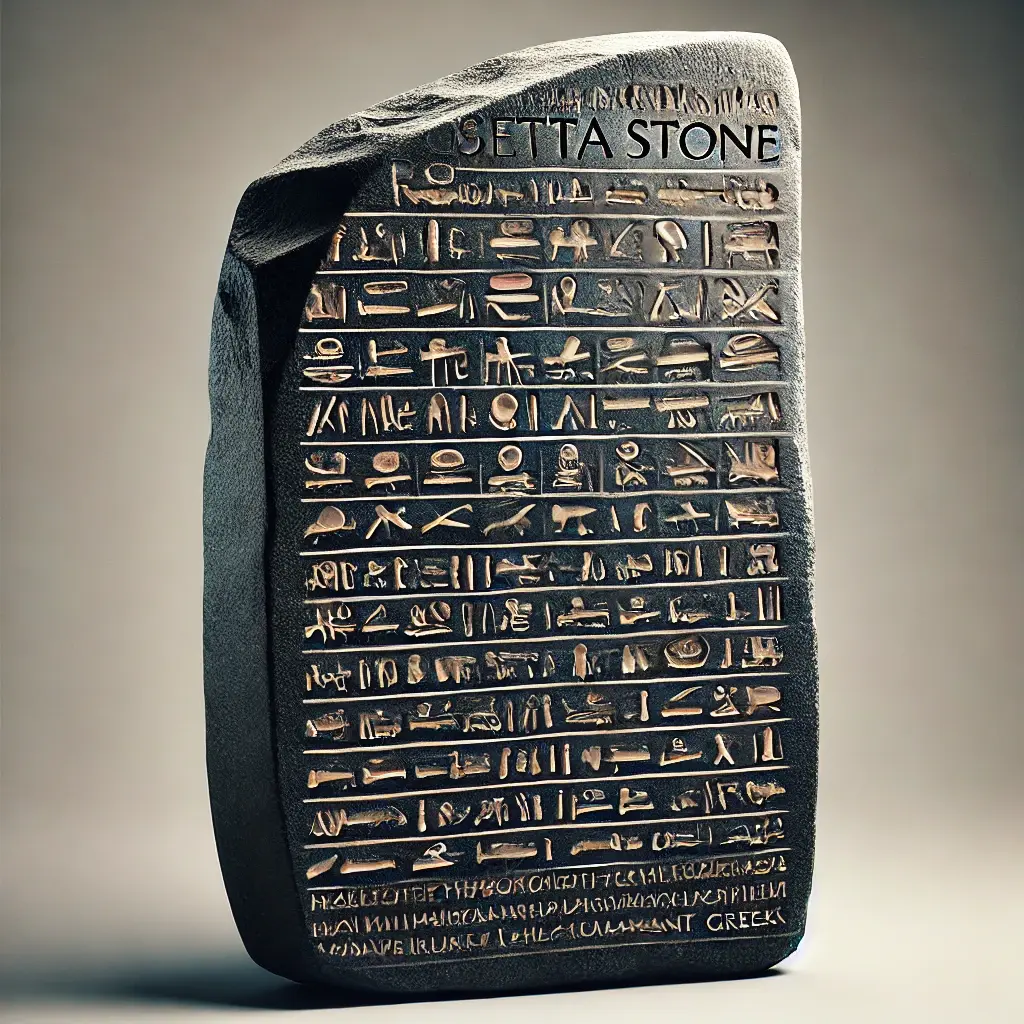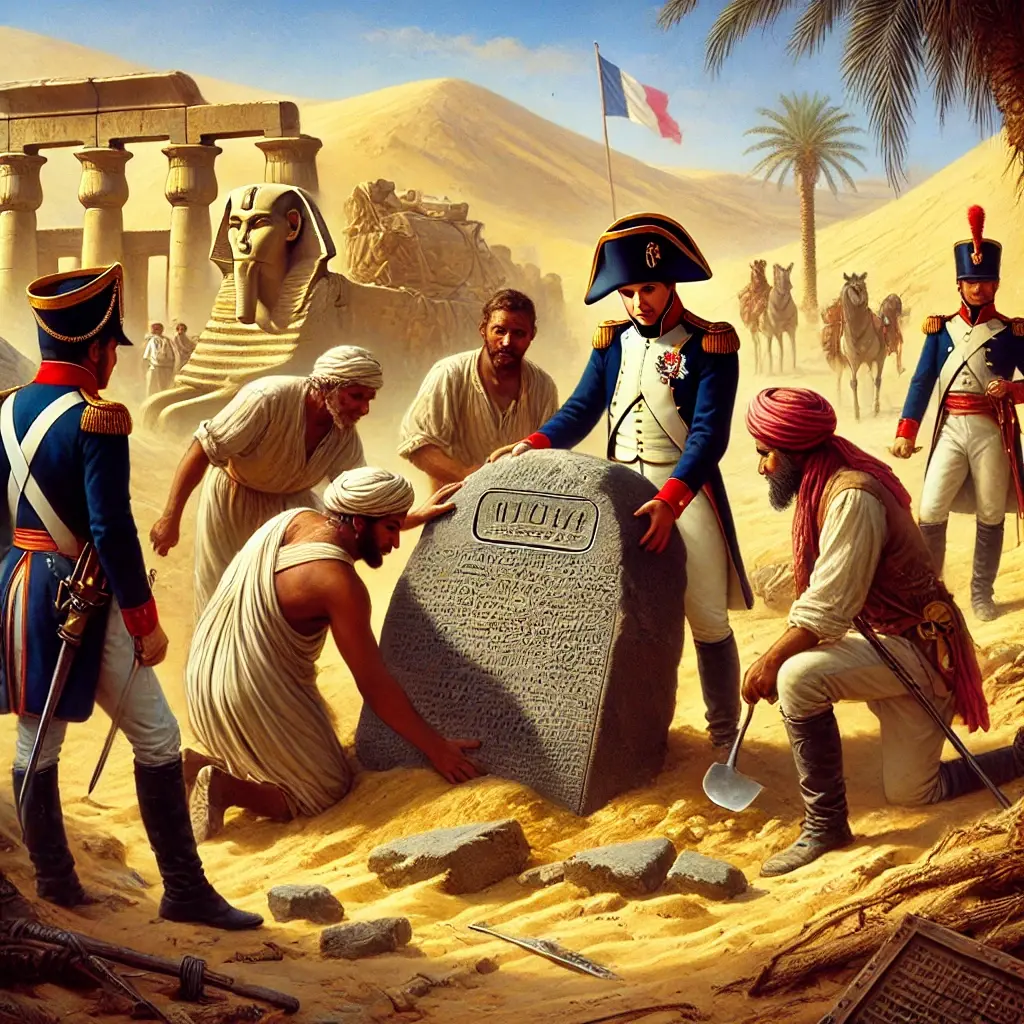On July 19, 1799, the Rosetta Stone was discovered by French soldiers who were rebuilding a fort in Egypt. This granodiorite stele inscribed with a decree issued in Memphis, Egypt, in 196 BC during the Ptolemaic dynasty became one of the most famous artifacts in archaeology. The text is written in three scripts: hieroglyphic, Demotic, and Greek, providing the key to modern understanding of Egyptian hieroglyphs. The Rosetta Stone has been instrumental in advancing the field of Egyptology, opening up vast insights into ancient Egyptian civilization.

The discovery of the Rosetta Stone on July 19, 1799, by French soldiers in Egypt stands as one of the most pivotal moments in the field of archaeology. Found during the construction of Fort Julien near the town of Rosetta (modern-day Rashid), this granodiorite stele has captivated scholars and the public alike for over two centuries. The stone’s inscriptions, which feature a decree issued in 196 BC during the Ptolemaic dynasty, are written in three distinct scripts: hieroglyphic, Demotic, and Greek. This multilingual text proved to be the crucial key to unlocking the long-lost secrets of Egyptian hieroglyphs, revolutionizing the study of ancient Egypt.
The Rosetta Stone’s significance lies in its trilingual inscriptions, which offered scholars the rare opportunity to compare and translate the ancient Egyptian language. Hieroglyphics, the formal writing system used in ancient Egyptian religious texts, had been undecipherable for centuries. The Demotic script, a more cursive form of writing used for daily purposes, and Greek, the language of administration during the Ptolemaic period, provided a clear pathway for linguists to decode the enigmatic hieroglyphs.
The initial recognition of the Rosetta Stone’s potential came from French linguist Jean-François Champollion. His groundbreaking work in the early 19th century involved meticulous analysis and comparison of the texts. Champollion’s realization that the hieroglyphic script was a combination of phonetic and ideographic elements allowed him to decipher the text, leading to a major breakthrough in Egyptology. His success demonstrated that the stone was not merely an artifact but a bridge to understanding an entire civilization.
The Rosetta Stone also highlighted the political and cultural interactions between Egypt and the Hellenistic world. The Ptolemaic dynasty, established by one of Alexander the Great’s generals, Ptolemy I, melded Greek and Egyptian cultures, as evidenced by the use of multiple scripts on the stone. This blending of traditions is a testament to the complex and interconnected history of the ancient Mediterranean and Near Eastern regions.
Following its discovery, the Rosetta Stone became a prized possession, initially held by the French but later transferred to British custody after the defeat of Napoleon’s forces in Egypt. It has since been housed in the British Museum, where it remains one of the institution’s most visited and studied artifacts. Its presence in the museum has sparked debates about the ownership and repatriation of cultural heritage, reflecting broader discussions about colonialism and the ethics of artifact collection.
The decipherment of the Rosetta Stone opened up new avenues for exploring ancient Egyptian texts and artifacts. Scholars were able to read and understand a vast array of inscriptions on temples, tombs, and monuments that had previously been inaccessible. This newfound knowledge provided rich insights into Egyptian religion, governance, daily life, and worldview, significantly expanding our understanding of one of history’s most intriguing civilizations.
In addition to its impact on Egyptology, the Rosetta Stone has become a cultural icon, symbolizing the quest for knowledge and the importance of linguistic and historical scholarship. Its story has been featured in numerous books, documentaries, and exhibitions, capturing the imagination of people around the world. The stone’s discovery and the subsequent decoding of hieroglyphics stand as a testament to human curiosity and the relentless pursuit of understanding our past.
The scientific methods developed in the wake of the Rosetta Stone’s discovery have influenced other fields of study as well. The principles of comparative linguistics and the use of bilingual and trilingual inscriptions have been applied to deciphering other ancient languages and scripts, advancing our comprehension of historical linguistics and philology. The stone’s legacy extends beyond Egyptology, contributing to the broader field of the humanities.
The physical characteristics of the Rosetta Stone also offer insights into ancient Egyptian craftsmanship and material culture. Made from granodiorite, a durable and heavy stone, the stele demonstrates the technical skill and resources available to the Ptolemaic administrators. The quality of the inscriptions, despite the wear and damage over millennia, speaks to the importance of the decree it bears and the care taken in its creation.
The decree inscribed on the Rosetta Stone commemorates the coronation of Ptolemy V and outlines the pharaoh’s benefactions to the priesthood and the populace. This historical context provides a snapshot of the political and religious landscape of Egypt during the Ptolemaic period. It reflects the complex interplay of power, religion, and governance that characterized ancient Egyptian society and offers a glimpse into the administrative practices of the time.
The rediscovery of ancient Egyptian culture through the Rosetta Stone has had a profound impact on modern Egypt. It has fostered a renewed sense of pride and interest in Egypt’s ancient heritage among Egyptians and has contributed to the development of Egyptology as a scientific discipline within the country. The stone’s legacy continues to inspire new generations of scholars, archaeologists, and enthusiasts who are dedicated to uncovering and preserving Egypt’s rich historical legacy.
In contemporary times, the Rosetta Stone has transcended its role as an archaeological artifact to become a symbol of the power of language and communication. It has inspired projects and initiatives aimed at promoting multilingualism and cultural exchange. The term “Rosetta Stone” has entered the popular lexicon as a metaphor for any crucial key to understanding complex information, highlighting its enduring influence.

As we reflect on the 225th anniversary of the Rosetta Stone’s discovery, it is important to acknowledge the collaborative efforts of the many scholars, researchers, and institutions that have contributed to our understanding of this remarkable artifact. The story of the Rosetta Stone is a testament to the importance of interdisciplinary cooperation and the collective pursuit of knowledge. Its journey from a fort in Egypt to a museum in London, and its role in unlocking the secrets of an ancient civilization, remains one of the most fascinating chapters in the history of archaeology.
The Rosetta Stone’s enduring legacy continues to shape our understanding of the ancient world, serving as a reminder of the interconnectedness of history, language, and culture. Its discovery not only revolutionized the field of Egyptology but also underscored the importance of preserving and studying ancient artifacts to gain insights into human civilization. As scholars and historians continue to explore the depths of our past, the Rosetta Stone remains a symbol of the relentless pursuit of knowledge and the profound impact that a single artifact can have on our comprehension of history.
